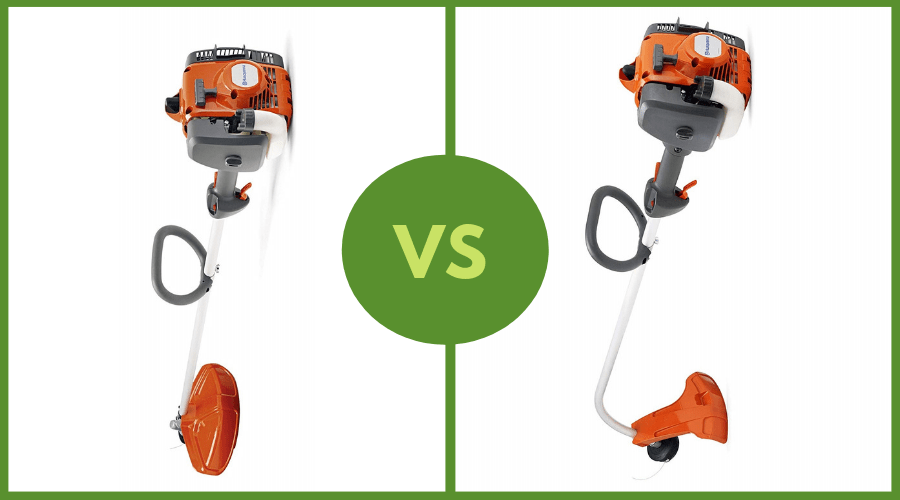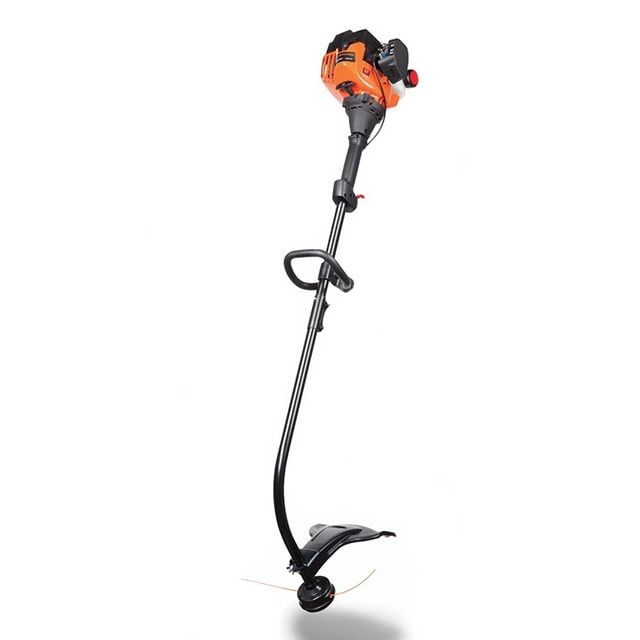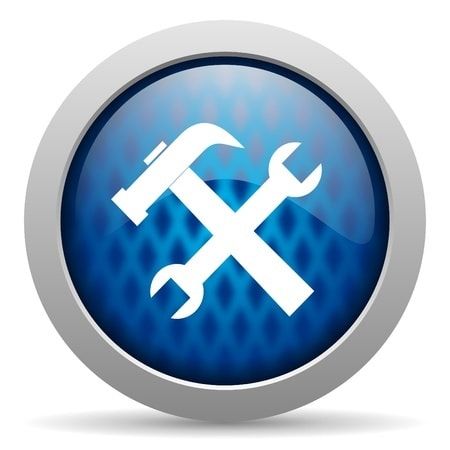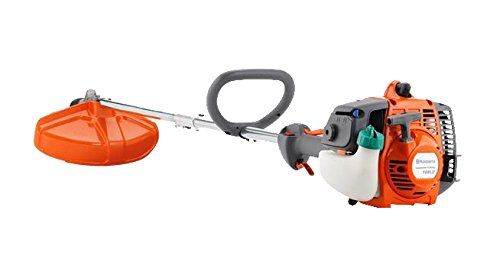Gas string trimmers are an invaluable resource to the lawn and yard enthusiast to trim and edge your spaces and help keep weeds at bay in hard to reach places- such as under your decking and against chain link fences.
There are a variety of string trimmers on the market, including electric models and gas, the most noticeable difference being their overall design. They are sold as either a straight shaft or curved shaft model, and depending on what you need your trimmer for specifically, your overall decision is going to be based on versatility and personal comfort.
So which is best for you? Read on for a detailed breakdown of the string trimmer straight vs curved model showdown!
STRING TRIMMER STRAIGHT VS CURVED SHAFT COMPARISON TABLE
|
Model |
Feature 1 |
Feature 2 |
Cutting Material |
Weight |
Price |
Used for |
|---|---|---|---|---|---|---|
|
String Trimmer Curved Shaft |
Arched driveline resulting in less torque |
Shorter shaft resulting in balance and ease of use in close areas |
Nylon line |
Averages 8 lbs |
Costs average $100 |
Trims weeds along borders and hard to reach areas |
|
String Trimmer Straight Shaft |
Level driveline keeps power consistent |
Longer shaft resulting in longer reach |
Nylon line with adaptability for accessories |
Averages 10-12 lbs |
Costs average $200+ |
Trims weeds along borders, hard to reach places, and under obstacles. Edges lawns and rockscapes. |
STRAIGHT SHAFT
PROS
- Heavy duty
- Long precision reach
- Multiple head choices
CONS
- Heavier weight
- Throws debris
- Increased vibration
CURVED SHAFT
PROS
- Lightweight
- Increased control
- Easy to store and transport
CONS
- Hard to keep the head level
- Short reach
- Difficult to get under bushes, decking, etc…
WHICH WORKS BEST FOR YOU?
To start defining the difference between the straight shaft vs curved shaft weed trimmer, we have to start with what exactly the shaft is. The shaft is the part of the weed eater that transfers power from the motor or engine to the lines which cut the grass via an internal drive cable. In a straight model, that cable is uninterrupted as well, and it follows that the the cable must then arch within a curved model. This can lead to more potential wear and breakage over time as well as a loss of power from the motor.
However, people who chose a curved shaft over the straight generally don’t use their trimmer for as many projects or for extended periods of time, so the wear is fairly relative over the product’s’ life.
STRING TRIMMER CURVED SHAFT
A contoured line trimmer is generally better-balance, lighter, and much less expensive than their level counterpart, running on average right around $100. However, because of the arched drive cable, most are limited to a nylon trimmer line head that cannot be swapped out with a more durable nylon or bladed head attachment. Those that can carry alternate attachments often sacrifice power due to the loss of torque through the curve. Notwithstanding, what extras it doesn’t have, it makes up for through ease of use in a small to medium sized yard, especially for a owner of smaller stature due to it’s style and weight.
DESIGN
This gas trimmer has a 2 cycle engine that powers a rotating head to which a nylon string attachment is connected. The main power is at the opposite end with a handle and hand grips of various sort in-between. Curved shaft trimmers are designed to be fairly lightweight (median is approximately 8 lbs), with a shorter reach that cuts using a pendulum type motion.
This design is extremely attractive to a person of shorter stature, and speaking from experience (since I only stand 5’4”), I find them comfortable and easy to use for basic yard maintenance. What’s more, basic trimming can be done fairly effortlessly and quickly because of this simple design.
USE
As with all weed wackers, a curved trimmer is built in mind with taking out your annoying weeds that grow up in the spaces your lawn mower can’t fit into. The design is conducive for trimming flawlessly around manicured garden beds, driveways, trees, paths, and fences with control and ease as you walk, and is perfect for the average suburban yard.
These durable little machines are easy to store and transport as well, and is a nice item to have for cleaning up the yard and lawn details for the moderate homeowner.
STRING TRIMMER STRAIGHT SHAFT
A leveled line trimmer is definitely more powerful and versatile altogether than a curved model, due to the shaft length. This translates into overall flexibility to maintain a variety of different jobs depending on your yard and space. It also means it is a heavier and occasionally harder to maneuver than a curved, although it is generally more durable.
What’s more, because of the extra control over torque you have as a user through the straighter drive cable, most models come equipped with interchangeable heads for a range of jobs without losing power to the tool itself. This does mean, of course, these models are more expensive, often running $200 or more.
DESIGN
This gas trimmer is powered through either a 2 or 4 cycle engine that administers a rotating head in the same manner a curved shaft does. Handle grips are similar as well in all models and are found between the engine and head of the tool.
The straight shaft is built with the purpose of reachability, and although you cannot cut with the ease of a rhythmic pendulum swing as you can with the more contoured design, you can reach under much lower hanging obstacles. Because of this, it is a bit more cumbersome overall, and generally falls in the median range of 10 lbs.
With that in mind, I mentioned I was only 5’4” earlier, and I have no problems using a straight line trimmer for extended periods of time, and prefer it due to its overall versatility. Most people of height prefer these models as well since a curved shaft can force you to lean into any hard to reach areas, putting a strain on those of taller stature.
USE
As mentioned, the straight shaft string trimmer is built for versatility and overall reach. If you have a medium to large yard with more than just walkways, garden beds, and fence lines, then this is most likely the tool you need.
Trimming walkways and garden beds is easy, as is edging the driveway or other paths by turning the trimmer to the side. But what’s more, the this design allows you to reach under low decking and shrubs or bushes, as well as cleaning up sharp corners and other hard to reach areas. This is difficult with the curved design due to both it’s shorter reach, as well as the added height due to the arch itself.
I own a moderately priced straight shaft string trimmer that I use weekly on a rural property spotted with trees, brush, fencing, garden beds, and a lawn. It has been easy to maintain and service (which is saying a lot about a woman who doesn’t know the first thing about mechanics), and keeps both the lawn and property looking spruced up after each use. A curved shaft would have been my choice for lawn care only due to both price and comfort for a quick job, but the adaptability of the straight shaft for the property I maintain has come in handy more than once.
SEE THE DIFFERENCE
Watch the video below to see a quick visual rundown between a gas string straight and curved trimmer.
WHICH WOULD YOU CHOOSE?
Obviously, you need to take into consideration both your needs and cost before committing to a purchase of a gas string trimmer. Basic yards with simple landscaping and pathways most likely don’t need all the bells and whistles a straight shaft line trimmer brings to the table. In this scenario, a curved shaft model would be both economically affordable and prudent, and give you many years of use keeping your lawn and yard well trimmed.
If your landscaping involves low hanging bushes and shrubs, decking, rockscape, and other hard to reach areas, you may want to consider spending a little more money and investing in a straight shaft gas model. Their overall durability and variability for multiple jobs is well worth the money spent, plus the added reach helps keep fatigue at bay on a larger property.
So which would you choose? If you have any questions, please feel free to comment below and we’ll get back to you with any answers you need. And as always, feel free to share!





